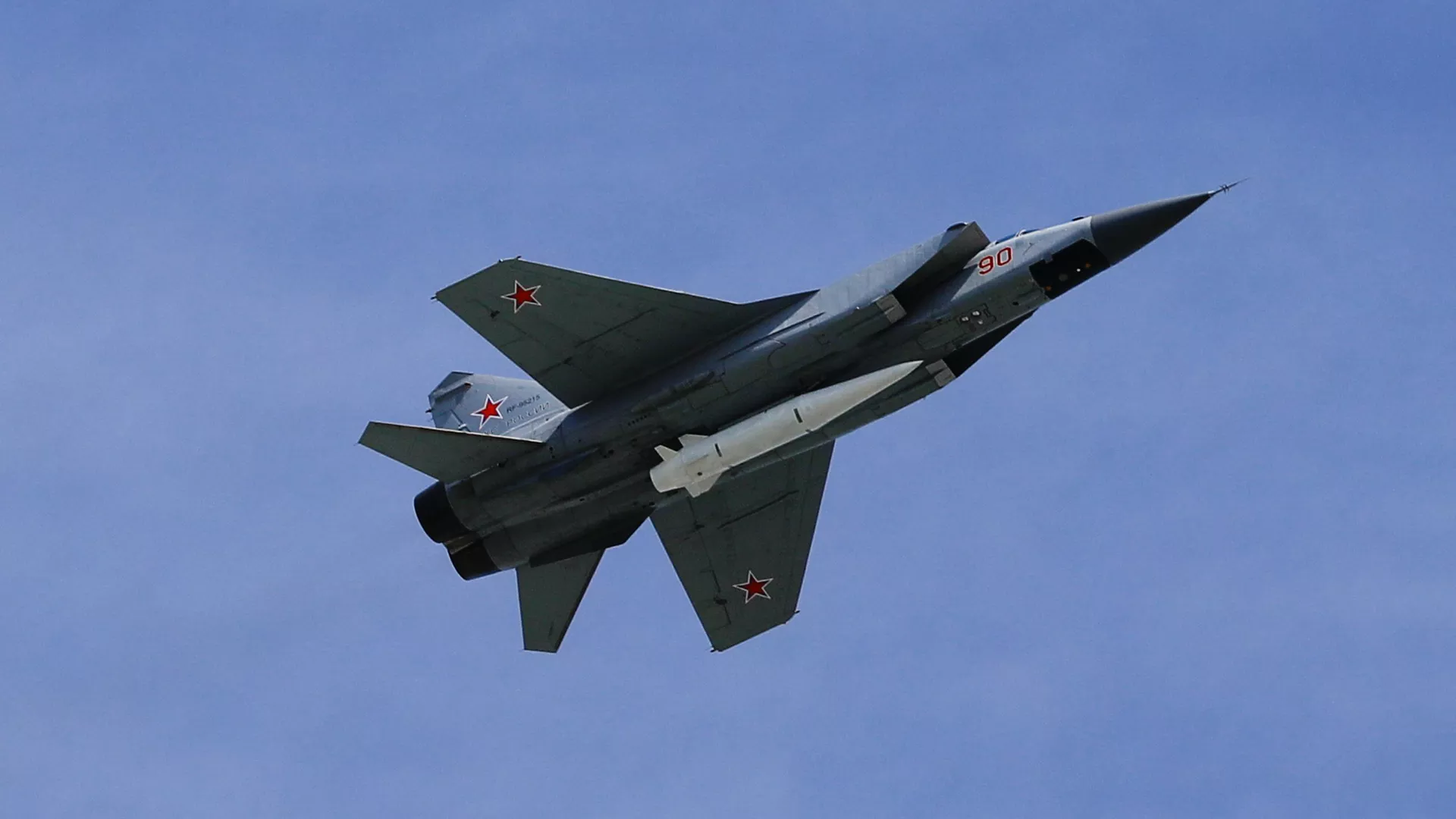Russia has begun using hypersonic missiles in Ukraine, the U.S. has confirmed.
Why it matters: Russia is the first country to use the missiles, which are hard to track, trace and destroy, in combat.
What is a hypersonic missile?
The term “hypersonic” means speeds at least five times faster than the speed of sound. Missiles that travel slower than sound are known as “subsonic,” and those that travel one to five times faster than sound are called “supersonic.”
- Missiles traveling at hypersonic speeds aren’t new. But unlike ballistic missiles, which follow a set path that generally can’t be altered, hypersonic missiles can maneuver in the air.
There are three kinds of hypersonic missiles, one old and two new:
- Hypersonic aeroballistic missiles are launched from the air and follow ballistic flight paths with a degree of maneuverability. This technology was first developed in the 1970s and 1980s. The Russian Kh-47M2 Kinzhal missile used in Ukraine falls into this category.
- Hypersonic glide vehicles (HGVs) are launched high into the atmosphere like intercontinental ballistic missiles, but then drop to fly on a lower, flatter trajectory. They then glide, controlling their speed and course before diving when approaching their targets.
- Hypersonic cruise missiles (HCMs) use advanced supersonic combusting ramjet, or “scramjet,” technology to propel themselves at several times the speed of sound. They then operate much like traditional cruise missiles, only more maneuverable.
Which countries have hypersonic missiles?
Russia: Moscow’s Kinzhal missile has been used against Ukraine.
- Military experts have suggested Russia is using the expensive missiles to further test them in the field, to intimidate Western nations or distract from the Russian military’s lack of progress.
- Russia is also testing an HGV called the Avangard, according to a recent Congressional Research Service report.
China: An HGV test by China in 2021 caught intelligence officials by surprise.
- Gen. Mark Milley, the chairman of the U.S. Joint Chiefs of Staff, called the incident very close to the kind of “Sputnik moment” that triggered the Space Race during the Cold War.
United States: As China and Russia advance their work on hypersonic missiles, the U.S. has shown “growing interest in pursuing the development and near-term deployment of hypersonic systems,” according to the CRS report.
- Military contractors are working on and testing HGV and hypersonic cruise missile systems for the Army, Navy and Air Force.
North Korea: Two hypersonic missile tests were conducted by North Korea in January with reported success.
- The tests were criticized by the U.S., U.K. and Japan as being “destabilizing” actions.
The U.K., France and other countries are also developing hypersonic missile systems, according to the CRS report.
What is a Kinzhal missile?
The Kinzhal, meaning “dagger” in Russian, is an air-to-surface missile that the Russian military claims can travel at more than 10 times the speed of sound and has a range of 1,200 miles.
- It can carry conventional and nuclear warheads.
- It is designed to be launched from MiG fighter jets.
Is there a defense against newer hypersonic missiles?
Not really. The missiles travel much faster than modern missile defense systems are designed for.
- What to watch: The Defense Department’s Missile Defense Agency last year selected Lockheed Martin, Northrop Gruman and Raytheon to develop a hypersonic missile defense system.


























